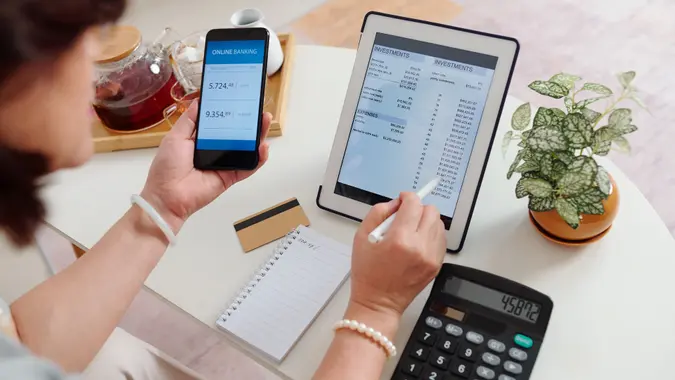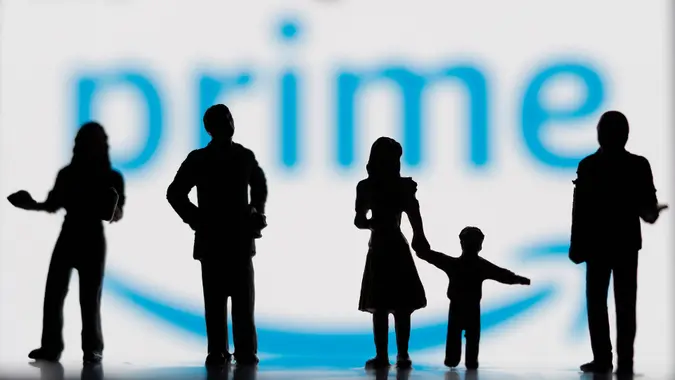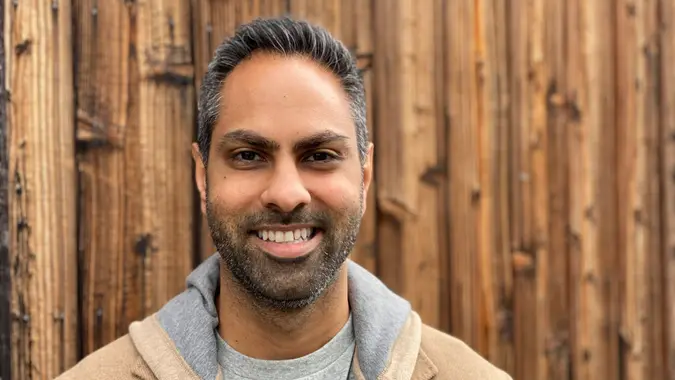Why ‘Paying Yourself First’ Matters More Than Ever

Commitment to Our Readers
GOBankingRates' editorial team is committed to bringing you unbiased reviews and information. We use data-driven methodologies to evaluate financial products and services - our reviews and ratings are not influenced by advertisers. You can read more about our editorial guidelines and our products and services review methodology.

20 Years
Helping You Live Richer

Reviewed
by Experts

Trusted by
Millions of Readers
If you’ve ever done any financial planning at all, you’ve likely heard the advice that you should “pay yourself first.” In a nutshell, this pithy slogan simply means that you should fund your savings and investment accounts before you use that money for anything else, even paying your bills.
But this strategy becomes even more essential during times of economic strain. As of Sept. 14, 2025, many Americans are feeling the financial pinch from stubbornly high interest rates and inflationary pressures that skyrocketed coming out of the coronavirus pandemic.
This is creating a cash crunch that could easily tip those living paycheck-to-paycheck into financial catastrophe. Here’s a closer look at why paying yourself first matters more than ever.
What Exactly Does ‘Paying Yourself First’ Mean?
The idea of paying yourself first is meant to overcome the natural tendency to “pay yourself last.” When people receive their paychecks, it’s common to pay bills like rent or mortgage first and then cover regular expenses like food, gas and utilities. Whatever’s “left over” is then shuffled into a savings or investment account.
Unfortunately, discretionary expenses often eat up what’s left after paying mandatory bills like housing and electricity, leaving nothing for savings and investments. That’s just basic human nature. Under that scenario, you may never build up an investment portfolio, or even an emergency fund. The “pay yourself first” strategy was created to prevent this from happening.
What you’ll specifically want to do is immediately divert a certain percentage or dollar amount of your paycheck into your savings and investment accounts. Then, create a budget and find a way to live off what remains. If that means you have to cut some of your discretionary costs, like eating out or streaming Netflix, then that’s just the way it is. The pay yourself first strategy forces you to prioritize savings and investments above all else.
Why This Matters More Than Ever
Ever since the coronavirus pandemic threw the global economy into a recession in 2020, prices for goods and services have skyrocketed. There are many reasons for this, from supply chain issues to the flood of money pumped into the economy to keep it afloat, but the bottom line is that costs in 2025 are considerably higher than in 2020. Food prices alone are 25% higher on average, 13News Now reported. But things could be on the verge of getting much worse.
Analysts at J.P. Morgan see a 40% chance of a recession striking before the end of 2025, largely due to the effects of tariffs finally kicking in. Perhaps even worse, the investment house sees a stagflationary economy, in which growth stalls but inflation remains high, or even increases.
In this type of economic environment, it’s essential to build up cash reserves and break out of the cycle of living paycheck-to-paycheck. With the economy potentially getting even worse in coming months, those who plan ahead and shore up their finances are the ones who will most likely skate through unscathed.
How Can I Start?
Whether you’re already an experienced saver or just starting out, automation is the key to long-term success. This is because humans are emotional and make mistakes. At any time, it’s far too easy to “forget” to set aside savings, promising you’ll pay yourself back the following month.
To avoid this trap, simply set up automatic transfers from your bank account to your savings. As soon as your paycheck hits, the money will be swept over before you can even touch it. Over time, as you adapt to living on what’s left over after you save, you might not even notice the monthly transfers. That’s the time to consider bumping up your savings percentage. Eventually, your goal should be to save at least 10% to 20% of your income.
What Are the Long-Term Effects of Paying Yourself First?
Beyond the near-term economic uncertainty, it’s important to pay yourself first to build long-term wealth. Although the exact percentages are debated, various surveys have found that nearly half to 60% of Americans are living paycheck-to-paycheck, per Econofact. Though there isn’t a solid consensus among experts and researchers, they generally found there widespread economic hardship in the U.S.
This is a problem that contributes to America’s overall retirement savings shortfall. After all, if you can’t pay your bills until you receive your next paycheck, how are you supposed to set aside money for your investments?
Over time, the strategy of paying yourself first can solve this dilemma. As you slowly build your savings every month, you’ll eventually end up with a sizable emergency fund. This can help keep you out of debt when you run into life’s inevitable financial surprises. It also serves as the foundation of a solid financial plan, keeping you out of the cycle of needing your next paycheck simply to pay your bills.
From there, you can focus on building your long-term net worth through investments. These are the first steps to true financial freedom.
 Written by
Written by  Edited by
Edited by 

























